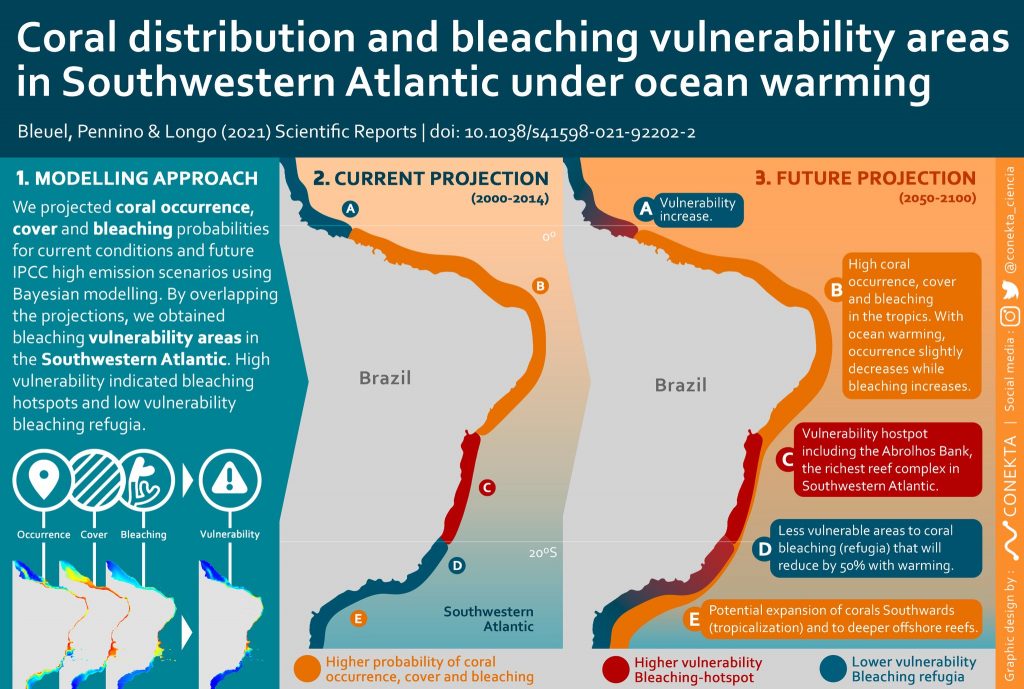Authors: Jessica Bleuel, Maria Grazia Pennino & Guilherme O. Longo
Global climate change is a major threat to reefs as it increases the frequency and severity of coral bleaching events, and reduces coral cover and diversity. Ocean warming may cause shifts in tropical coral communities if temperatures rise above their thermal limits and extratropical regions (marginal reefs) become suitable as potential refugia. Bayesian models were used to project coral occurrence, cover and bleaching probabilities in the Southwestern Atlantic and predicted how these probabilities will change under an IPCC high-emission scenario (RCP8.5). By overlapping the projections, areas with high probabilities of coral occurrence, cover and bleaching were identified as vulnerability-hotspots. Current coral occurrence and cover probabilities were higher in the tropics (1°S–20°S) but with ocean warming will decrease and shift to new suitable extratropical reefs (20°S–27°S; tropicalization). Over 90% of the area present low and mild vulnerability, while the vulnerability-hotspots represent ~ 3% under current and future scenarios, but include the most biodiverse reef complex in South Atlantic (13°S–18°S; Abrolhos Bank). As bleaching probabilities increase with warming, the least vulnerable areas that could act as potential refugia are predicted to decrease by 50%. Predicting potential refugia and highly vulnerable areas can inform conservation under climate change.
Read more here
